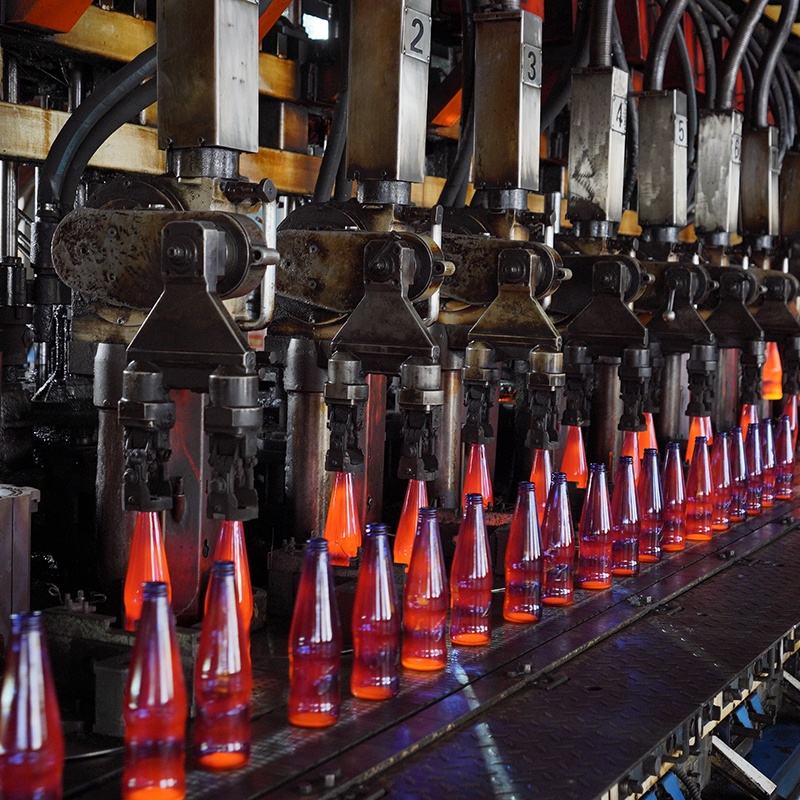When it comes to glass, color is not just decoration — it’s chemistry, precision, and art fused together. From deep blue wine bottles to vibrant holiday bulbs, every shade of colored glass tells a story of careful material selection, temperature control, and furnace expertise.
At QLT Glass Products Manufacturing Co., Ltd., we combine scientific accuracy with creative craftsmanship to produce colored glass that is as visually stunning as it is technically consistent.
1. How Colored Glass Is Formed
Ordinary glass is colorless and transparent. To create color, manufacturers add a small amount of metal oxides — usually between 0.4% and 0.7% — during the batch preparation process. These oxides serve as colorants, giving the glass its hue through their specific spectral properties.
Each metal oxide produces a distinct color:
-
Chromium oxide (Cr₂O₃) → Green glass
-
Manganese dioxide (MnO₂) → Purple or violet glass
-
Cobalt oxide (Co₂O₃) → Deep blue glass
-
Copper oxide (CuO) → Blue glass
-
Cuprous oxide (Cu₂O) → Red glass
That’s why materials like welding goggles, traffic lights, and colored glass bulbs rely on specific metallic oxides to achieve their unique shades.
2. The Role of Temperature and Furnace Atmosphere
The final color of glass depends not only on the additives but also on melting temperature and furnace atmosphere.
By adjusting the oxidation and reduction conditions, glassmakers can control the valence state of elements, thus determining the resulting color.
For example:
-
When copper exists as CuO (oxidized form), the glass turns blue.
-
When copper exists as Cu₂O (reduced form), it becomes red.
Sometimes, a second reheating process is required to fully develop the desired brilliance and depth of color — a technique QLT uses to ensure uniform and vibrant results across large production runs.
3. Rare Earth Oxides — Modern Glass Coloring Technology
In recent years, rare earth elements have revolutionized the art of glass coloring. Their oxides produce purer, brighter, and more stable hues, and even allow for color-changing effects under different lighting conditions.
For example:
-
Neodymium oxide (Nd₂O₃) glass appears violet in sunlight and bluish-purple under fluorescent light.
-
Photochromic glass, enhanced with elements like tungsten or platinum, darkens under strong light and lightens indoors — ideal for smart windows and photochromic lenses.
These advanced materials make it possible to create “automatic curtain glass” that adjusts brightness naturally while blocking UV rays — perfect for libraries, museums, and modern architecture.
4. Applications of Colored Glass
Today, colored glass is a versatile material used across multiple industries:
-
Lighting – Decorative bulbs, ambient lamps, and artistic light fixtures.
-
Architecture – Facades, curtain walls, and UV-protective smart glass.
-
Optics & Safety – Welding goggles, camera filters, and sun-protective lenses.
-
Packaging – Premium wine bottles, cosmetic jars, and food containers that enhance brand identity.
Colored glass doesn’t just add beauty — it offers functionality, protection, and brand distinction.
5. Why Choose QLT Glass for Colored Glass Production
At QLT Glass, we don’t just produce colored glass — we engineer visual identity for your brand.
With our advanced furnaces, real-time temperature monitoring systems, and precise material formulation, we ensure:
-
Consistent color tones across batches
-
High transparency and purity
-
Stable performance under varying light and heat conditions
-
Durable coatings and color longevity
From classic emerald green wine bottles to custom amber or cobalt blue packaging, QLT delivers solutions that combine aesthetic impact with industrial precision — making your products stand out and shine.
Post time: Oct-09-2025

